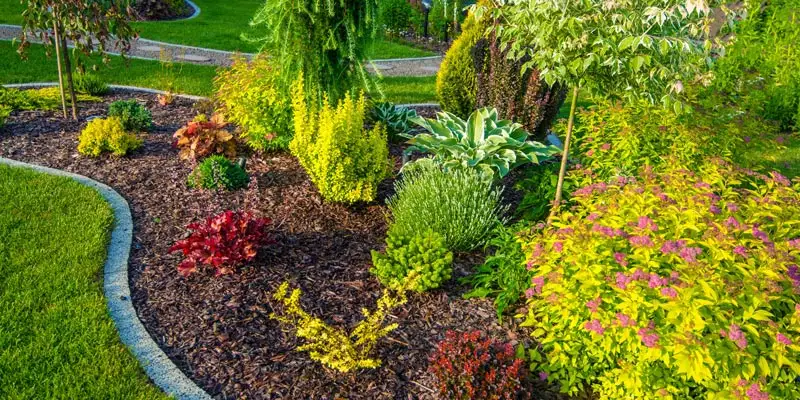The smart Trick of Landscape Design That Nobody is Talking About
Table of ContentsThings about Landscape DesignLandscape Design Can Be Fun For EveryoneThe 20-Second Trick For Landscape DesignEverything about Landscape DesignA Biased View of Landscape Design
A lawn can generally be divided into three areas: public (the front backyard), private (the back yard), and service (typically the side lawn). The place of task areas depends mainly on the type of location, the size of room required, the type of activity, and the preferred proximity to various other tasks and structures.The outside wall of your house often serves as the first wall surface or beginning point of an outdoor space. Inappropriate usages need to be separated, and related activities, such as cooking and dining, ought to be created to make the lawn extra efficient and pleasurable. When utilizing hardscape to develop rooms, use construction material comparable to that used in the house for continuity from your home into the garden.
Connected rooms. Credit Rating: Gail Hansen, UF/IFAS Making use of similar hardscape attributes and duplicating plants pulls the eye around the garden. Vital factors along the road can be highlighted with plantings or functions that draw attention and urge motion in a specific direction. Relocating along the course takes a person from one location to the following and enables the individual to have a range of experiences.
The 45-Second Trick For Landscape Design

For mental convenience plants are utilized as physical or suggested barriers for personal privacy and safety. Physical obstacles obstruct both the sight and access to an area and consist of fences, walls and plant hedges. Implied obstacles, commonly low growing plants, obstruct gain access to yet not the sight (Figure 9). Other features of plants consist of cleaning up the air, preventing erosion and soil loss, keeping moisture in the dirt, and returning raw material to the soil.
Physical and implied barriers. Credit Score: Gail Hansen, UF/IFAS For these factors, the kinds of plants to be utilized (such as trees, bushes, or groundcovers) must be selected in the very early stages of preparation (Landscape Design). Plant kinds are picked for their useful abilities so that their future purpose and needed room can be considered at the exact same time

The Buzz on Landscape Design
Each plant mass is in front of, behind, or following to, one more mass. Debt: Gail Hansen, UF/IFAS Duplicating plants within a mass and duplicating masses with comparable plants ties the garden with each other. The private plant features should be considered to efficiently layer and mass plants.
All plant make-ups start with the main structure plants, the large, primarily evergreen background plants-such as the trees and big shrubs. These plants separate or enframe spaces, manage the dimension of the space, and give the starting point for selecting the ideal characteristics of the 2nd layer, midground plants, for massing and infill.
Crucial factors in the yard need to be highlighted by the use of distinct plants, distinct structures, or garden accessories. Noting limits or entrances to spaces can be made with entrances, arbors, and steps, or with using special and vibrant plants. The type and/or style theme of the yard will certainly frequently assist identify the crucial factors and just how they need to be highlighted.
Various other vital areas in the pop over to this site lawn are prime focus, which is used to visually arrange a landscaped area. The kind of focal factor usually relies on the checking out point of view. Different perspectives or perspectives can expose different make-ups in the landscape that may require a selection of focal factors. Contrasting structure, shape, dimension and color will catch and hold the eye.
The Greatest Guide To Landscape Design

Plant forms. Credit History: Gail Hansen, UF/IFAS After kind, appearance is the following leading attribute of a plant; crude, tool and fine structures can have a peek at this website be utilized for contrast and focus in the landscape.
The positive aroma of plants, the noise of wind in the trees, the audio and structure of water, and the shades and appearances of sculptures, pots and yard furniture all contribute to the experience of the yard. One detail that is commonly neglected is the result of light on the visual appeals of the plants.

A Biased View of Landscape Design
It is important to understand the ultimate mature dimension of plants so they can be placed in the right location and spaced effectively when they are mounted. Offering plants area to expand is a difficulty since the typical mature dimension is commonly based upon ideal growing problems and the ecological conditions of a website might trigger a plant to grow bigger or remain smaller.